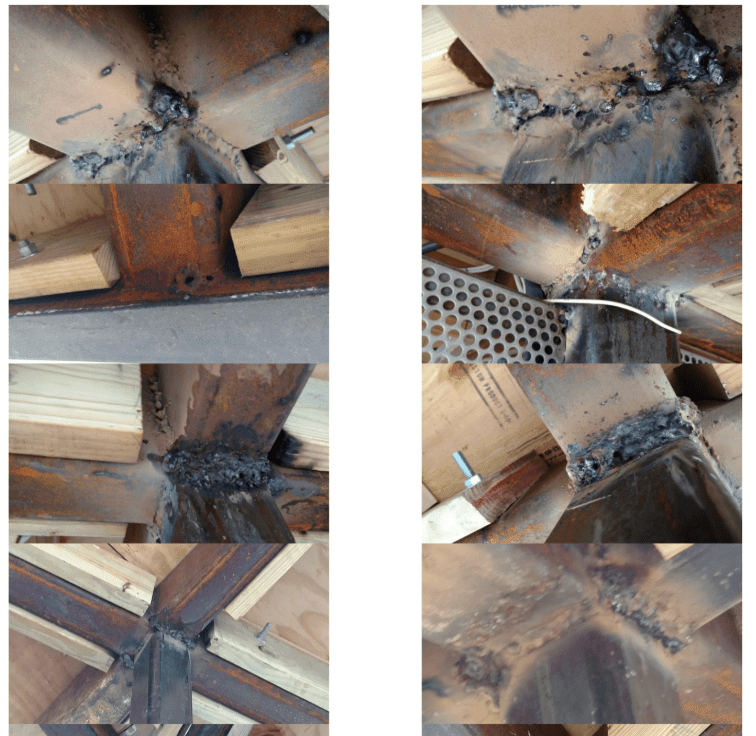So you're just welding top and bottom? The problem is that you divided your moment by 2" rather than 4". If you fix that, the AISC equation will give you a smaller weld.
Two problems I see otherwise: you're not considering shear and you're acting like you'll have a full 4" of fillet weld top and bottom. You won't. There's a curvature at the corners of those tubes and you lose quite a bit. Especially something as thick as 1/2" wall HSS. You actually can't count on much of anything for that - you'll essentially have a pipe. (Check out the dimensions in the Square HSS table in the steel manual - workable flat.)
You can use Blodgett's analysis equations - once you fix your 2" and 4" mixup, you'll see that it gives you the same demand on the weld. And once you get the demand on the weld, you can use the current AISC equations to size it. Just be mindful of the actual shape and the combined shear stress from bending, tension, direct shear, and compression if the weld is transferring the compression (usually best to assume it is unless you're detailing it otherwise).

